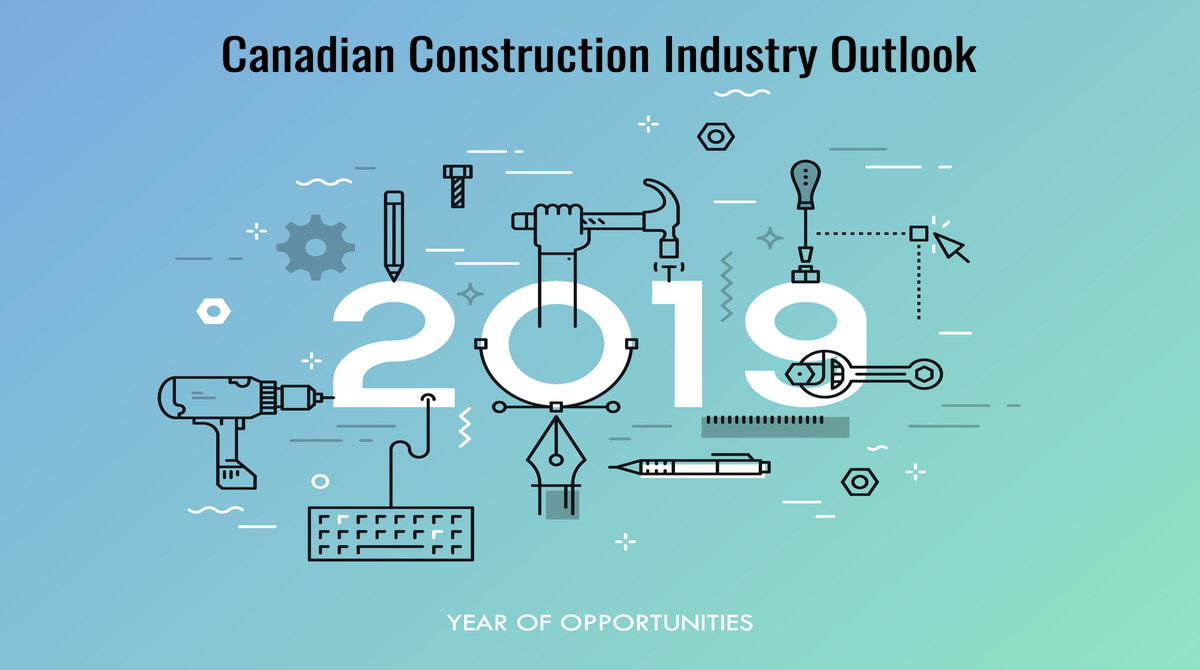
The outlook for the construction Industry in 2019 remains positive, if somewhat passive.
Six straight quarters of higher spending in the non-residential segment and progress on several major projects have raised confidence this fall and created a sense of cautious optimism for industry insiders who are predicting what 2019 will be like. 2018 was a year known for it's mixed results for the industry.
While the prediction from most watchers is generally good, long nagging issues such as the following are posing real challenges for builders in 2019:
- Labor shortages
- Technology Integration
- Concerns about Canada's business climate
The construction industry is no exception here regarding labor shortages. Without qualified workers, contractors just cannot get projects done. The looming retirement of 250,000 aging builders over the next 10 years, or about 21 percent of the workforce, according to a BuildForce Canada study released earlier this year, has forced many in the construction industry to take a hard look at employee recruitment. Click here to view the entire report.
Paul De jong, president of the Progressive Contractors Association of Canada sees the tight labor market as a serious problem.
"As we move forward, we are going to have a serious problem with maintaining that growth when we don't have enough workers to do the work. You can see that particularly in the areas like the city of Toronto where many projects are delayed because there's simply not enough workers."
President of the Progressive Contractors Association of Canada | Paul Dejong
The industry's struggle to attract new recruits isn't about pay. It's the approach taken by some in the education sector that seem to devalue opportunities in construction.
All the years of guidance counsellors telling students who are really better suited to trades to go to universities instead have taken their toll. 48 percent of construction firms surveyed by the Business Development Bank of Canada said it had been difficult to hire new workers over the past 12 months.
Steps have been taken in requesting funding that will attract promising students to gravitate toward construction and industry associations point to women and First Nations as groups construction companies need to recruit and retain. Even if companies pull in more work, the industry won't be able to grow unless it addresses its underlying workforce issue.
Major new jobs such as the $5.7 billion Gordie Howe International Bridge and the recently announced $40 billion LNG Canada project in Kitimat, B.C. are expected to tighten the labor market further.
Work on new transit lines and multi-unit residential projects are expected to  continue through 2019. The industrial and commercial building segments are also forecast to remain healthy in Ontario and Quebec, though investment may not remain at its current level according to the latest Conference Board of Canada analysis. The robust growth in the industrial and institutional markets is likely unsustainable as business confidence and spending intentions decline.
continue through 2019. The industrial and commercial building segments are also forecast to remain healthy in Ontario and Quebec, though investment may not remain at its current level according to the latest Conference Board of Canada analysis. The robust growth in the industrial and institutional markets is likely unsustainable as business confidence and spending intentions decline.
Scotiabank is more optimistic about the situation in Ontario and Quebec, where non-residential spending has long outpaced the country as a whole. Click here to see all the upcoming commercial construction opportunities in Ontario.
While the pipeline project has had it's ups and downs, it would be a multibillion-dollar boon for the construction industry. There is still major concerns about the uncertain fate of the pipeline and about its impact on Canadian capital investments as a whole. Even with all this going on, contractors still have a big part to play in showing they are fit to complete jobs safely, environmentally and on budget.
Softening economic growth will reflect a shift in the main drivers of expansion. Domestic demand growth is poised to diminish because consumers and real estate can no longer drive growth as they have done in the past. This means that exports and business investment will be more important contributors to economic growth. Weaker demand growth and potentially lower commodity prices are expected to be a headwind on exports over the next few years.
Businesses are expected to remain cautious in capital spending. After growing a robust 3.0 percent in 2017, the pace of economic growth in Canada is projected to slow to slightly below 2.0 percent in 2019 and drop to 1.4 percent in 2020.
Posted by Judy Lamelza









